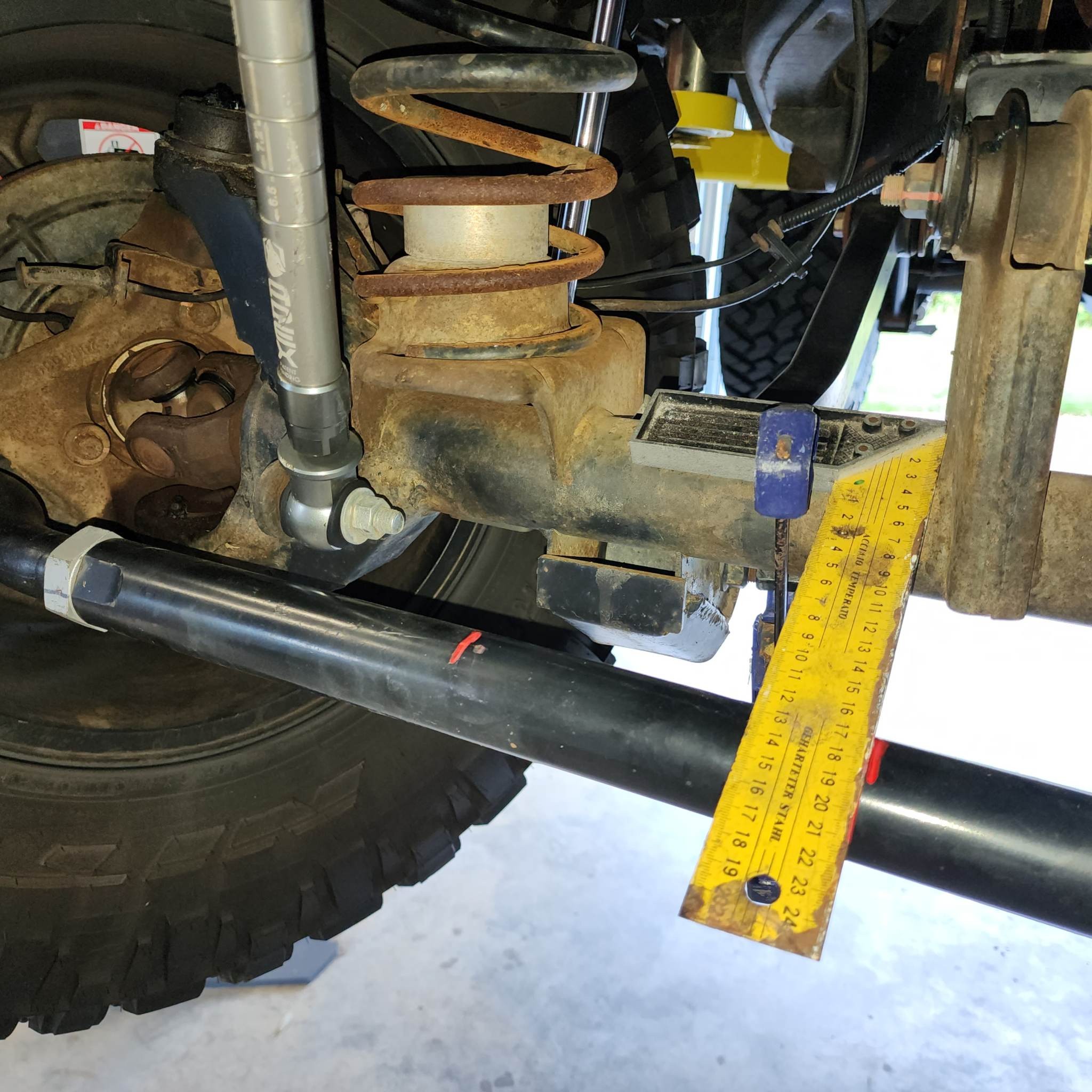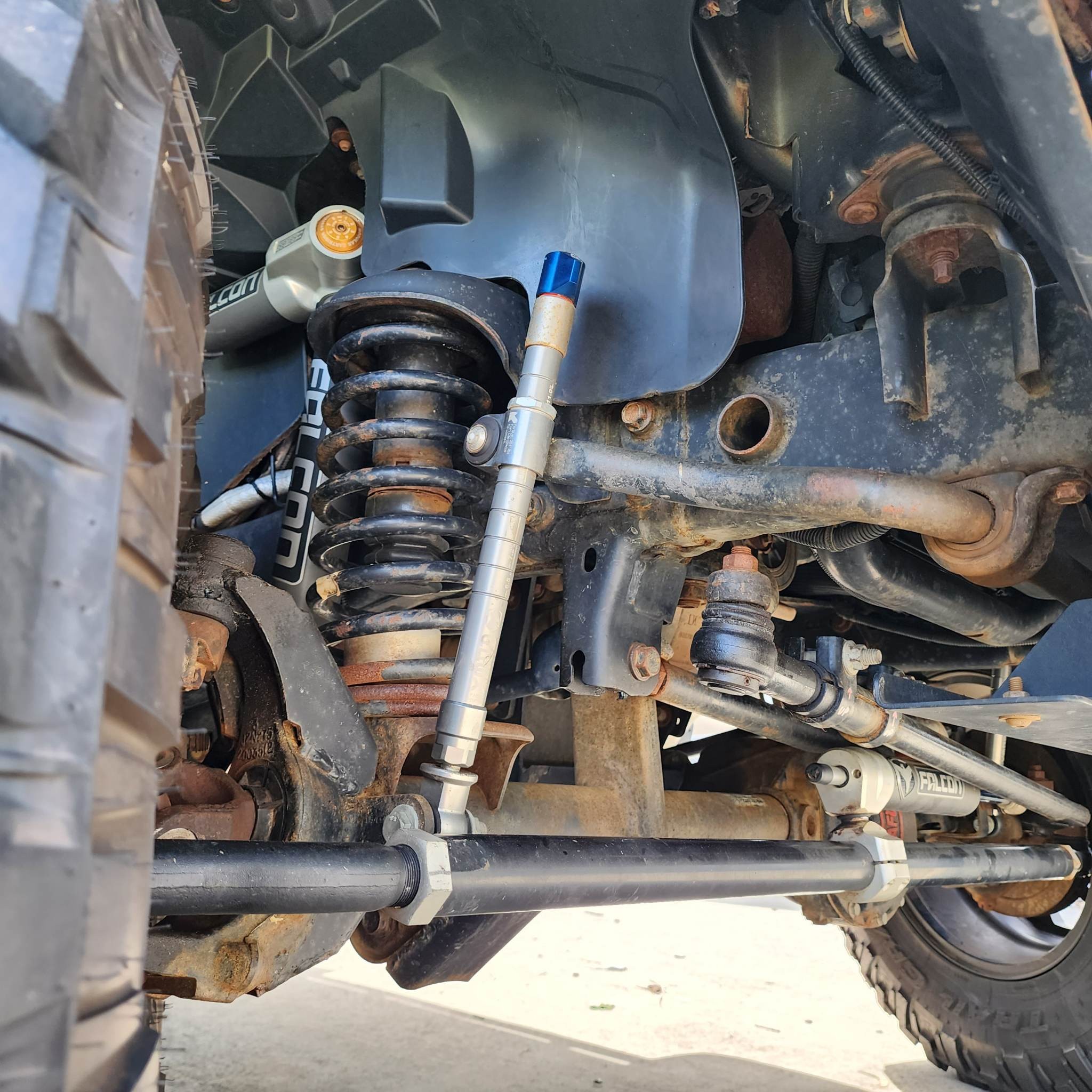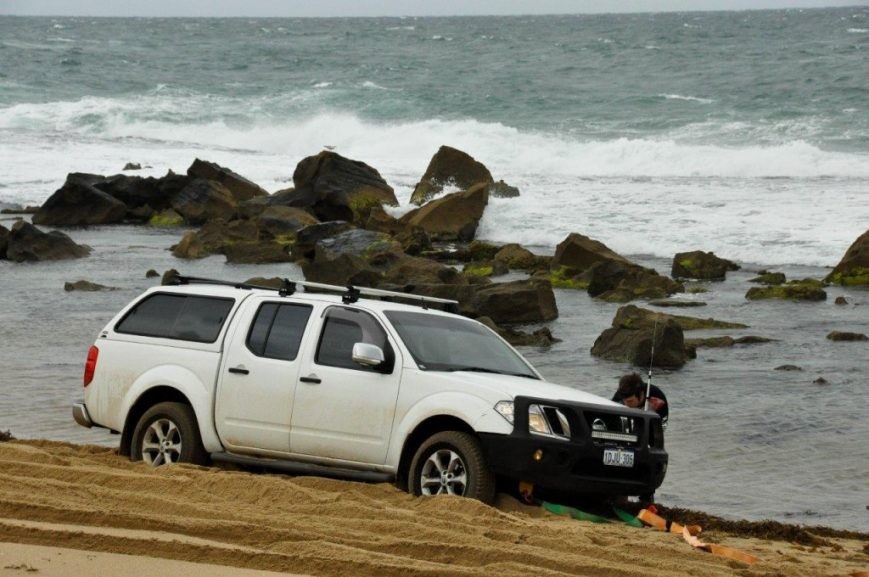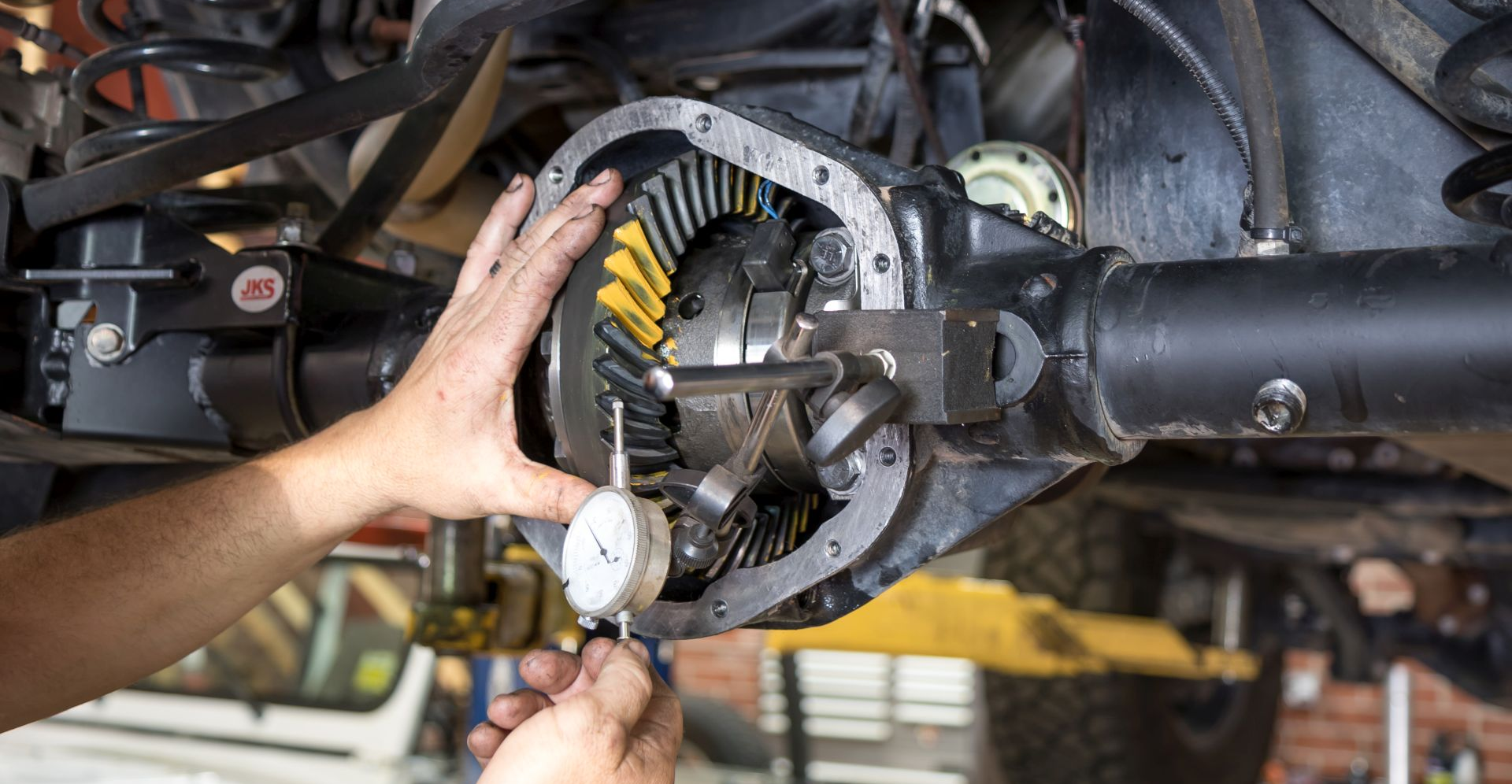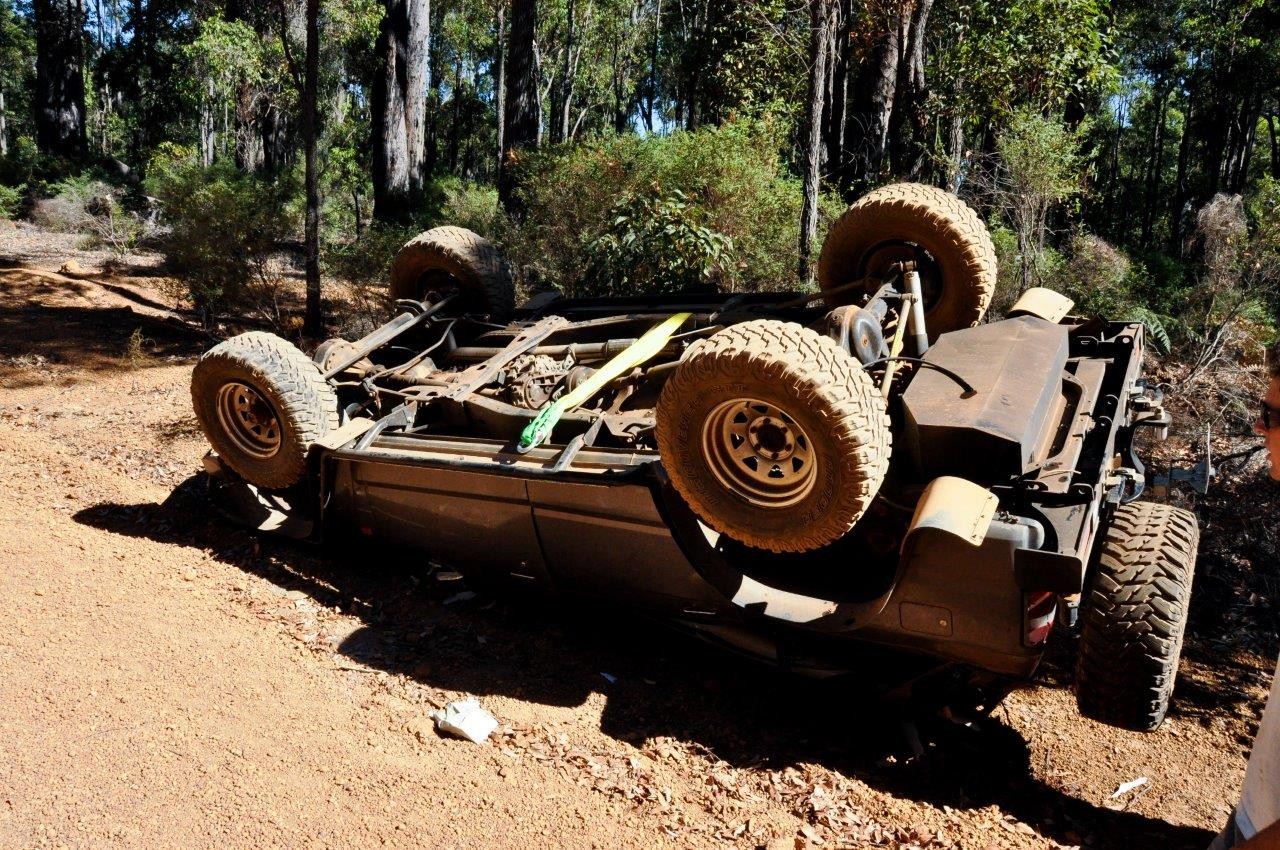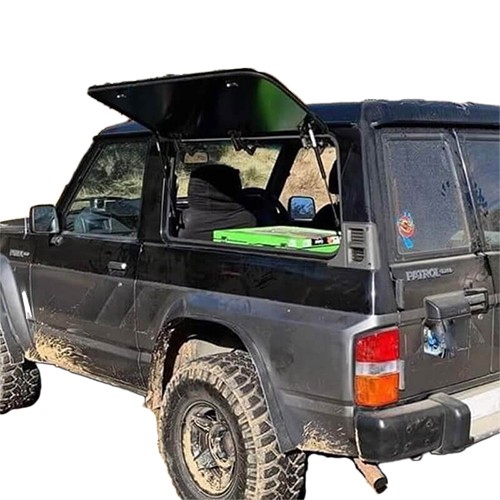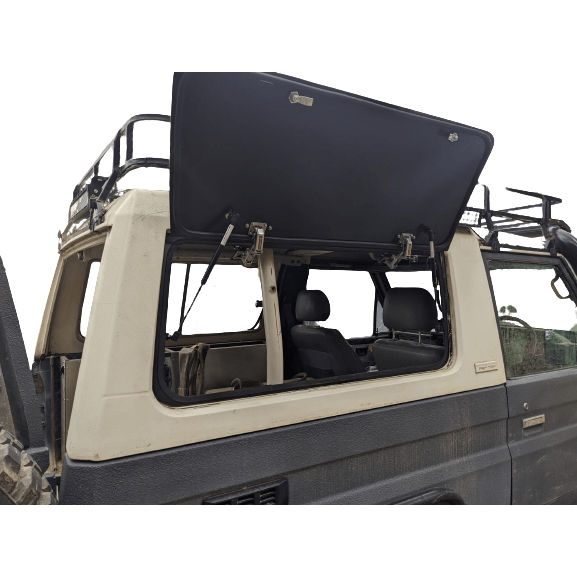Roll Center & Center Of Gravity
Fixing handling after a lift.
Most 4WD vehicles when they are shipped out from the factory drive really nicely with good on-road manners and handling, however... We all like to lift our vehicles 2 or maybe 3 inches to get better ground clearance, get more flex and to fit bigger tyres. This article will be a technical discussion predominantly based on vehicles with front and rear live axles however some principles apply to all vehicles.

We will learn about Bump Steer, Roll Center, Center of Gravity and Death Wobbles and ways you can improve or fix these handling characteristics in your vehicle.

What is Roll Center?
Roll-center is the imaginary point around which the body leans in a turn and also around
which it moves when the suspension flexes when you're driving off-road. There is one roll-center each for the front and rear suspensions. The location of each roll-center for most solid-axle suspensions is defined by the geometry of the track-bars (aka panhard bars).
On late-model live-axle vehicles (in this example a Jeep Wrangler), the front track-bar runs in front of the axle from the frame on the
driver‟s side to the axle on the passenger‟s side. The rear bar is behind the axle and the attachments are reversed. The actual roll-center
is found by drawing an imaginary vertical line down the middle of the vehicle and another straight line between the bolts at the ends of the
track bar (ignore the bends in the bar). The intersection of these two lines is the roll-center.
When lifting a 4wd vehicle, the roll center is affected and moved downward generating more body roll in the vehicle's suspension. We will explain how to correct this further in the article.

What is Center Of Gravity?
The center of gravity in a 4wd vehicle is the point where the weight of the vehicle is evenly distributed. It is the point at which the vehicle will balance itself on a flat surface. In a 4wd vehicle, the center of gravity is typically located higher than in a 2wd vehicle due to the added weight and height of the four-wheel drive system. This can affect the stability and handling of the vehicle, especially when driving off-road or in uneven terrain.
When lifting a 4wd vehicle, the center of gravity is also raised and this can cause handling issues and greater body roll.
What is Bump Steer?
Bump steer is a term used to describe the tendency of a 4wd vehicle's wheels to steer involuntarily in response to bumps or irregularities in the road surface. This can occur when the suspension system of the vehicle is not properly aligned, causing the wheels to move in a different direction than the steering wheel.
In a live-axle vehicle, the front track-bar controls the centering of the axle at normal ride height and as it travels through it's arc, the axle may move left to right. This is greatly accentuated if the track-bar is less horizontal to the road surface.
What is Death Wobble?
Death wobble is a term used to describe a violent and uncontrollable shaking or vibration that can occur in a 4wd vehicle when driving at higher speeds, typically above 60km/hr. The wobbling or shaking can become so severe that the driver may feel as if they are about to lose control of the vehicle. Death wobble can be caused by a number of factors, including worn or damaged suspension components, unbalanced or out-of-round tires, or a misaligned steering system. It can also be caused by modifications to the vehicle's suspension or steering system that have not been properly installed or adjusted. It is important to have any issues with death wobble addressed as soon as possible to ensure the safety and stability of the vehicle and prevent further damage to suspension components and steering.
One of the most commonly worn components is the frame side track bar mount bracket. The mounting hole in this bracket often wallows
out or becomes an oval shape which allows a lot of play side to side in the track bar. Tough Toys manufactures a brace kit to rectify
this issue. The brace also strengthens the track bar bracket and the steering box sector shaft.
More information on the Tough
Toys - Track Bar Bracket Reinforcement & Sector Shaft Brace can be found here.

Suspension Lifts and their effect on steering
When the 4wd vehicle leaves the factory, it is usually sent out with the factory track bar and drag link as parallel to the ground and most importantly, to each other as possible. When raising the vehicle with taller springs, you are inadvertently raising the frame side of the track bar mount and the steering box side of the drag link. The track-bar is then put on a much steeper angle the higher you lift the vehicle.
The track-bar operates in an arc around the frame side mount and at a steeper resting angle it forces the axle to move in a much greater horizontal motion relative to the rest of the vehicle. This left to right motion can be a cause of bump steer in a lifted 4WD.

Correcting issues
To correct suspension lift issues, the best method is to make the track bar on the lifted vehicle as parallel to the ground as possible. There are 2 options:
Lower the frame side mount.
Lowing the frame side mount, although sometimes simpler to achieve, is not the recommended way to change the track bar angle as this method lowers the roll center of the vehicle further and creates even more body roll.
Raise the axle side mount.
Raising the axle side mount is the recommended way to correct the track bar angle. By doing this, you are increasing the roll center height and reducing the vehicle body roll by bringing the roll center point closer to the center of gravity point.

When you are altering the mounting position of either side of the track bar, you must keep in mind the relationship between the track bar and the steering drag link. These links must be kept as parallel as possible in order to avoid introducing bump steer.
There are 2 methods of doing this:
Drop pitman arm:
A drop pitman arm is an aftermarket arm that lowers the height of the drag link mount. This is usually done in conjunction with lowering the frame side mount of the track bar in cheaper lift kits. It is not recommended as it places more stress on the factory steering box and may cause premature wear or worse, twisting or breaking the sector shaft.
Drag link flip:
This is achieved by moving the drag link mount from below to above the steering knuckle. The ball joint on the drag link must be “flipped” from facing up to facing down in order to reuse the drag link. Sometimes an aftermarket pre-flipped drag link can be purchased for your vehicle. This method is the most recommended as it aligns the drag link more horizontal with the steering box and brings it closer to the factory position giving much less stress on the steering box and components.

Real life
In real life terms, If you lift your Jeep 3 inches, and leave the track bar mount brackets untouched, you have raised your center of gravity by 3 inches and your roll center by approximately only 1.5 inches.
The result is an increase in body roll of the vehicle as well as an increase in axle horizontal movement as it swings through the track bar arc over bumps and undulations.
On a Jeep JK Wrangler, relocating the drag link to the top of the steering knuckle in a “drag link flip” gives the axle side of the drag link a raise in height of 3 inches.
This is why there are aftermarket brackets available to raise the track bar on the axle side 3 inches keeping the 2 links as parallel as possible.
By doing these modifications you have brought the roll center up further by another 1.5 inches and brought the separation between the roll center and center of gravity back similar to the factory specifications.
If the center of gravity and the roll center are at a similar height, you will get very little body roll, and if the roll center is too far below the center of gravity you will get large amounts of body roll into corners. Isn't that wild!

